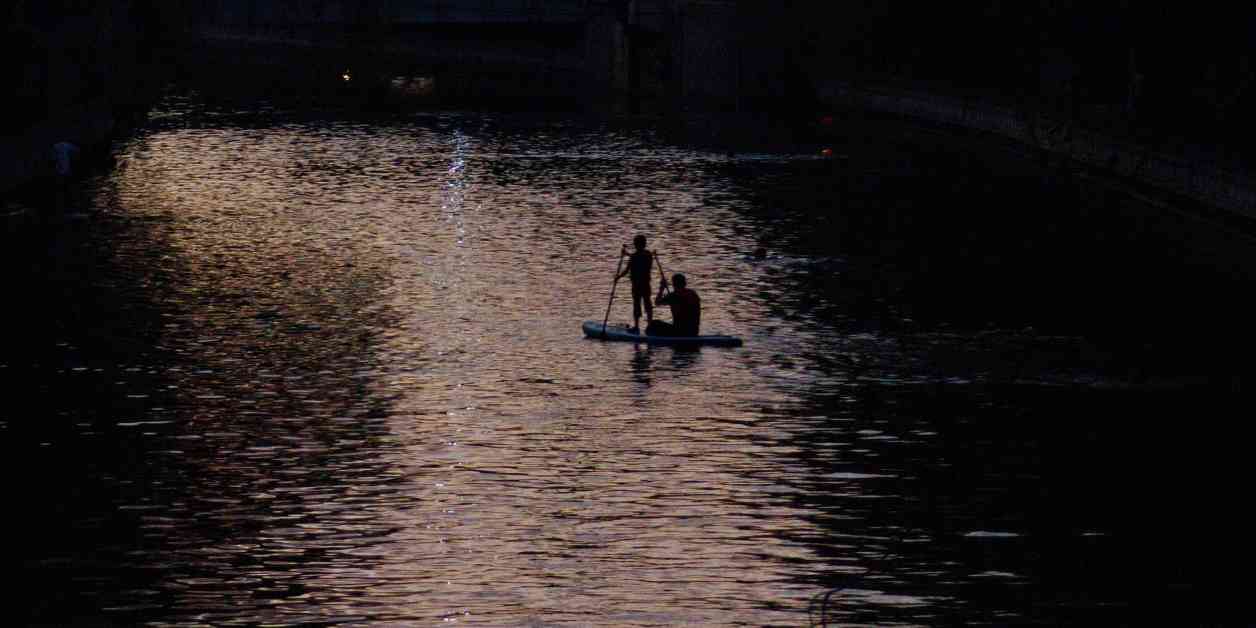Shanghai, known for its bustling streets, towering skyscrapers, and vibrant nightlife, has recently seen a surge in a unique summer adventure trend – night kayaking. This activity, while exciting and refreshing, has also raised concerns about safety and regulation in the outdoor sports industry in the city. With temperatures soaring during the day, many locals and tourists alike are turning to night kayaking as a way to beat the heat and explore the city from a different perspective.
Unforeseen Dangers of Night Kayaking
One mother, Xu, had a frightening experience while night kayaking on the outskirts of Shanghai with her child. What was supposed to be a fun and memorable holiday activity turned into a harrowing ordeal for Xu. The company organizing the trip promised a unique experience with views of fireflies and riverside scenery reminiscent of the Amazon. However, things took a turn for the worse when Xu found herself lost on the water in the pitch dark, with no help in sight.
In an interview with the Shanghai Observer, Xu described feeling frightened and panicked during the ordeal. The lack of support and guidance from the tour guide left her questioning the safety measures in place for such activities. This incident sheds light on the potential dangers of night kayaking, especially when proper precautions and regulations are not followed.
Regulation and Safety Concerns
The outdoor sports industry in Shanghai, particularly water sports like kayaking, lacks adequate regulation and oversight. With the increasing popularity of activities like night kayaking, there is a growing need for stricter safety measures and professional standards. Industry insiders have raised concerns about the lack of trained staff, inadequate safety equipment, and a general disregard for safety protocols among some companies.
Chen Yanjun, the owner of a water sports club in Shanghai, highlighted the need for improved safety awareness in the industry. He pointed out that some managers prioritize profit over safety, leading to potentially dangerous situations for participants. Without proper training, supervision, and equipment, the risk of accidents and injuries during water sports activities, especially at night, remains high.
Challenges and Solutions
One of the main challenges facing the water sports industry in Shanghai is the lack of regulations governing activities in non-navigable waterways. Without designated navigation channels or rules for managing traffic, kayakers and other water sports enthusiasts are left to navigate waters without clear guidelines or supervision. This lack of oversight contributes to the safety concerns raised by industry experts and participants like Xu.
Authorities in Shanghai are taking steps to address these issues by amending river management regulations to include provisions for water sports activities. The General Administration of Sports in China has also emphasized the importance of improving safety measures and event planning for water sports. However, until stricter regulations are put in place, the responsibility falls on companies to ensure the safety of their customers.
Ensuring Safety in Night Kayaking
While some water sports clubs in Shanghai may cut corners on safety measures to save costs, others prioritize the well-being of their customers. Wang Xi, a staff member at Shanghai BIC Sport, emphasized that safety is a top priority for their kayaking trips. Mandatory life jackets, stationed lifeguards, small group sizes led by experienced instructors, and additional staff for support are some of the measures taken to ensure the safety of participants.
Despite the challenges and risks associated with night kayaking, it remains a popular and exhilarating activity for many in Shanghai. With the right precautions, regulations, and professional standards in place, night kayaking can continue to be a thrilling summer adventure for locals and tourists alike. As the outdoor sports industry evolves and grows in Shanghai, it is essential to prioritize safety and responsible practices to prevent accidents and ensure a positive experience for all participants.

















